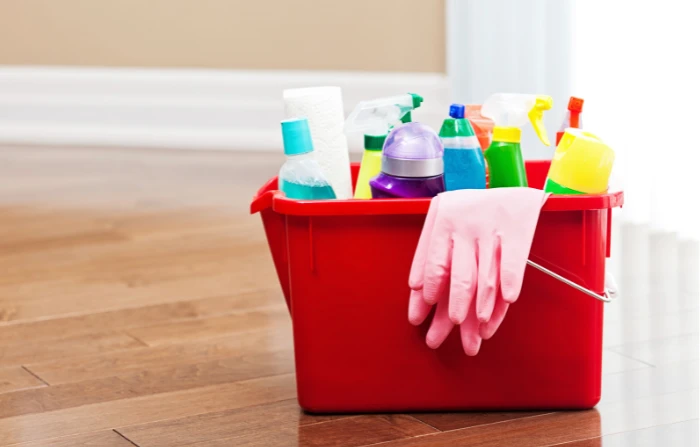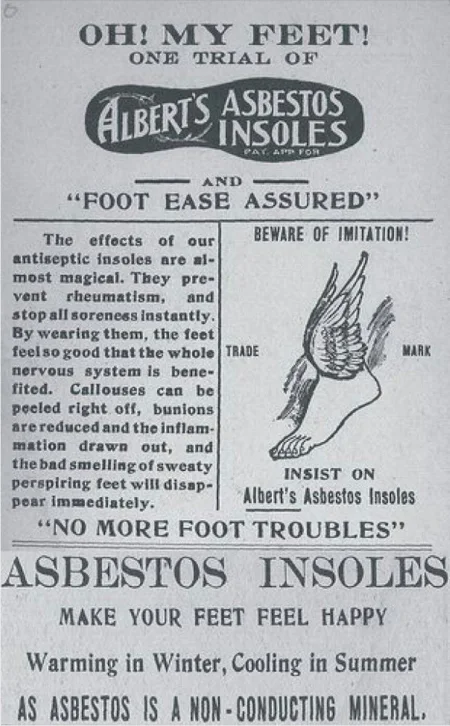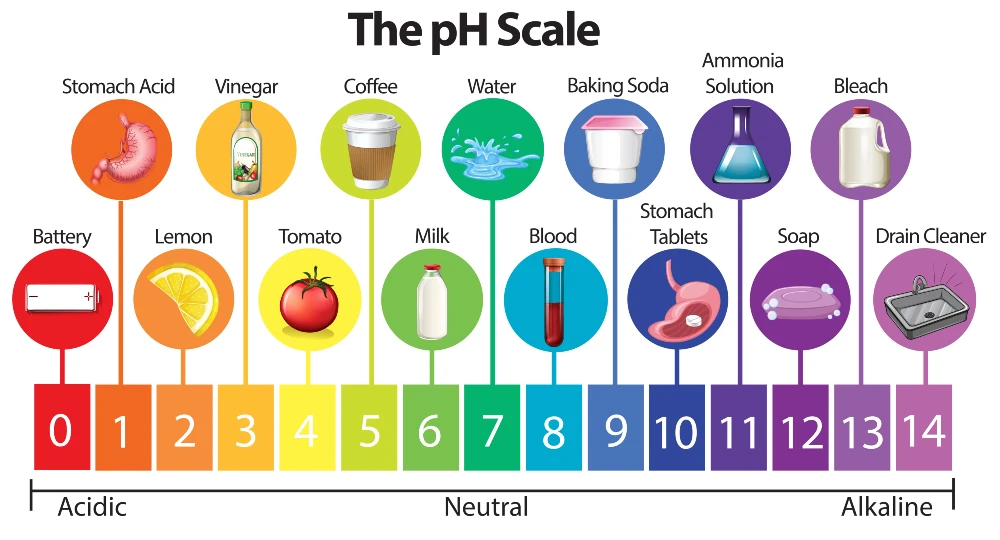In the quest for a cleaner and healthier living environment, many homeowners are seeking non-toxic cleaning solutions.
As we delve into the world of house cleaning, this article aims to unveil the truth behind non-toxic products, offering insights that professionals have long held.
From deciphering the nuances between non-toxic and safer choice products to understanding chemical safety and surface suitability, we’ll empower you with the knowledge to make informed and eco-conscious cleaning choices.
Navigating Non-Toxic Claims
In a world where environmental concerns are taking center stage, the allure of non-toxic cleaning products has captured the attention of homeowners and professionals alike.
As we seek to create a healthier living environment for ourselves and our families, the promise of non-toxic solutions seems like a beacon of hope.
But before we dive headlong into the realm of “green” cleaning, let’s take a closer look at what non-toxic really means in today’s context.
The Rise of Non-Toxic in an Eco-Conscious Era
Picture this: shelves lined with cleaning products adorned with labels boasting “non-toxic” in bold, reassuring letters.
In an era where sustainability and eco-friendliness are the buzzwords of choice, non-toxic cleaning products have become the knights in shining armor, promising to cleanse our homes without leaving a toxic footprint behind.
From natural enthusiasts to seasoned cleaning professionals, the appeal is undeniable: a sparkling clean home without the chemical hazards.
However, the path to a genuinely non-toxic cleaning routine isn’t as straightforward as it may seem.
The term “non-toxic” has undergone a transformation, evolving into a catch-all phrase that evokes feelings of safety and well-being. Yet, beneath the surface, lies a landscape fraught with complexities.
As consumers, we find ourselves navigating a maze of marketing jargon and claims that can sometimes be misleading. This is where the critical importance of responsible ingredient evaluation comes into play.
The Evolution of a Buzzword & Embracing Responsible Ingredient Evaluation
Historically, “non-toxic” was a term that provided assurance against the immediate harm caused by ingesting or contacting a substance.
If a substance didn’t cause immediate harm upon contact with skin or ingestion, it was deemed non-toxic.
However, the modern understanding of toxicity extends beyond the immediate effects. We now know that substances can have long-term and cumulative effects on our health and the environment, even if they don’t cause immediate harm.
So, as conscious consumers and cleaning professionals, it’s imperative to dig deeper. Instead of relying solely on the allure of non-toxic claims, let’s embrace responsible ingredient evaluation.
When selecting cleaning products, we must consider the entire lifecycle of the ingredients, from production to disposal.
Are these ingredients derived from sustainable sources?
Do they break down harmlessly in the environment?
These are questions that deserve our attention.
Realizing the True Non-Toxic Promise
In our journey toward non-toxic cleaning, it’s crucial to set a higher bar for our standards. Instead of fixating solely on the term “non-toxic,” let’s look for certifications and programs that rigorously evaluate and validate the safety and environmental impact of cleaning products.
One such beacon of assurance is the Environmental Protection Agency’s (EPA) “Safer Choice” program, which examines every ingredient in a product and runs rigorous tests to ensure it meets stringent safety and environmental criteria.
In our quest for cleaner homes and a healthier planet, the allure of non-toxic cleaning products is an enticing proposition.
However, let’s remember that the term “non-toxic” has evolved, and true non-toxicity encompasses a broader spectrum of considerations.
By embracing responsible ingredient evaluation and seeking out programs like “Safer Choice,” we take meaningful steps toward a cleaner, safer, and more environmentally friendly cleaning routine.
In the next sections, we’ll delve deeper into understanding chemical safety, surface suitability, and the power of informed choices in the world of non-toxic cleaning.
The Right Chemistry: Decoding Surface and Soil
When it comes to effective and safe cleaning, the chemistry between cleaning chemicals, surfaces, and types of dirt plays a pivotal role.
Imagine this scenario: you’re faced with hard water spots on your shower glass doors and stubborn toilet rings.
These challenges require more than just a one-size-fits-all approach. Let’s dive into the world of tailored cleaning solutions, exploring the art of matching chemicals to surfaces and soil for optimal results.
A Symphony of Cleaning Chemistry
Think of cleaning as a symphony of chemical interactions. Just as different musical instruments contribute unique melodies, different cleaning chemicals have distinct actions on various surfaces and types of dirt.
It’s not just about eliminating dirt; it’s about doing so without compromising the integrity of the surface or introducing harmful substances into our living spaces.
The Glass Shower Conundrum
Imagine those beautiful glass shower doors marred by hard water spots, a common woe in households with mineral-rich water.
This scenario requires a chemical that can effectively dissolve mineral deposits without etching or damaging the glass.
The chemistry behind the solution is as important as the solution itself.
Enter the Toilet Ring Enigma
Now, picture the stubborn toilet ring that seems impervious to regular cleaning.
This challenge demands a different approach, as the buildup consists of different compounds.
A tailored solution is needed to break down the ring without harsh scrubbing or abrasive chemicals that could harm the porcelain.
Unlocking the pH Puzzle
As we venture deeper into the realm of tailored cleaning, we encounter a fundamental concept: pH levels.
The pH scale, ranging from acidic to alkaline, influences how cleaning chemicals interact with surfaces and soil.
For instance, an alkaline solution might excel at breaking down grease on kitchen countertops, while an acidic solution could tackle mineral deposits on bathroom fixtures.
Understanding pH is like mastering a dance with your cleaning chemicals.
Ceramic tiles, for instance, generally fare well with alkaline solutions, whereas natural stone surfaces require a gentler touch due to their sensitivity to acidic solutions. This nuanced approach ensures effective cleaning without inadvertently causing damage.
The Soil Factor
But wait, there’s more! Let’s not forget about the type of dirt we’re dealing with. Is it grease, grime, mineral buildup, or something else?
Different cleaning challenges demand different chemical strategies.
Soil type, in conjunction with surface material, influences the choice of chemicals to ensure that the cleaning process is efficient and safe.
As we embark on the journey of non-toxic and effective cleaning, the importance of tailored chemistry becomes clear. One-size-fits-all approaches fall short in the face of diverse surfaces and soil challenges.
By understanding the delicate dance between pH levels, surface materials, and soil types, we equip ourselves with the knowledge needed to make informed choices.
In the following sections, we’ll delve into the Safer Choice program and the significance of personal protective equipment, further empowering you on your path to expert non-toxic cleaning.
From Non-Toxic to Safer Choice
In a world where “non-toxic” claims abound, it’s time to embrace a more robust and credible alternative: the Environmental Protection Agency’s (EPA) “Safer Choice” program.
Let’s illuminate the path from non-toxic to the Safer Choice seal, where the promises of safety and eco-friendliness undergo rigorous testing, approval, and validation.
The Safer Choice Program: A Seal of Rigorous Testing and Approval
As the term “non-toxic” becomes increasingly ambiguous, the Safer Choice program emerges as a beacon of assurance for conscientious consumers and cleaning professionals. This program, established by the EPA, transcends mere marketing jargon.

It is a comprehensive evaluation that delves into the intricate details of every ingredient within a cleaning product.
The Safer Choice seal isn’t handed out lightly; it’s earned through a meticulous and stringent process.
Imagine a team of experts scrutinizing each ingredient for potential harm to humans, pets, and the environment.
These scientists leave no stone unturned, ensuring that the promises of safety extend beyond immediate contact to long-term well-being.
Realize the impact of the Safer Choice program through the numbers.
Over the past 15 years, the EPA has scrutinized, approved, and certified over 2,000 products with the Safer Choice seal.
These products encompass a diverse range of cleaning needs, from shower glass doors to upholstery, laundry to window cleaning, and much more.
Empowerment Through Accessible Resources
For those eager to make informed choices, the EPA provides a wealth of resources at your fingertips. A simple visit to the Safer Choice website opens doors to a vast array of Safer Choice-approved products.
With just a few clicks, you can peruse and select cleaning solutions that align with your commitment to safety and environmental responsibility.
In the ever-evolving landscape of cleaning products, the Safer Choice program stands as a testament to credibility, rigor, and transparency.
By shifting our focus from loosely defined “non-toxic” claims to the Safer Choice seal, we invest in products that have undergone meticulous evaluation for our well-being and the well-being of our planet.
As we proceed through the upcoming sections, we’ll delve deeper into chemical safety, personal protective equipment, and crafting an eco-conscious cleaning arsenal, equipping you with the tools to navigate the world of cleaning with expertise and confidence.
Chemical Safety 101
Demystifying Safety Data Sheets (SDS): Navigating the Compass of Chemical Knowledge
Imagine you’re embarking on a journey through the chemical landscape of cleaning products. Your compass?
The Safety Data Sheet (SDS), a comprehensive document that unveils the secrets of each product. Think of it as your map, guiding you through a terrain of composition, potential hazards, handling instructions, and emergency procedures.
Here’s why mastering SDS is like having a trusted guide on your cleaning adventures:
Composition Clarity: SDS reveals the intricate composition of a product, detailing each ingredient. This transparency empowers you to understand what you’re working with and make informed choices.
Hazard Identification: It’s like having X-ray vision for potential dangers. SDS flags any hazards associated with the product, be it toxicity, flammability, or reactivity. Armed with this knowledge, you can take precautions and handle with care.
Safe Handling: SDS doesn’t just inform; it educates. It provides guidelines on how to properly store, use, and dispose of a product. This ensures that you’re well-prepared to prevent accidents and mishaps.
Emergency Preparedness: Think of SDS as your emergency hotline. It equips you with essential information to deal with spills, exposures, or other emergencies, ensuring a swift and safe response.
Mastering SDS is akin to having a GPS that navigates you through potential hazards and guides you to effective, safe, and environmentally conscious cleaning practices.
Decoding Pictograms: The Visual Language of Safety
Next, let’s explore the visual language of safety encoded in those tiny symbols on cleaning product labels—pictograms.
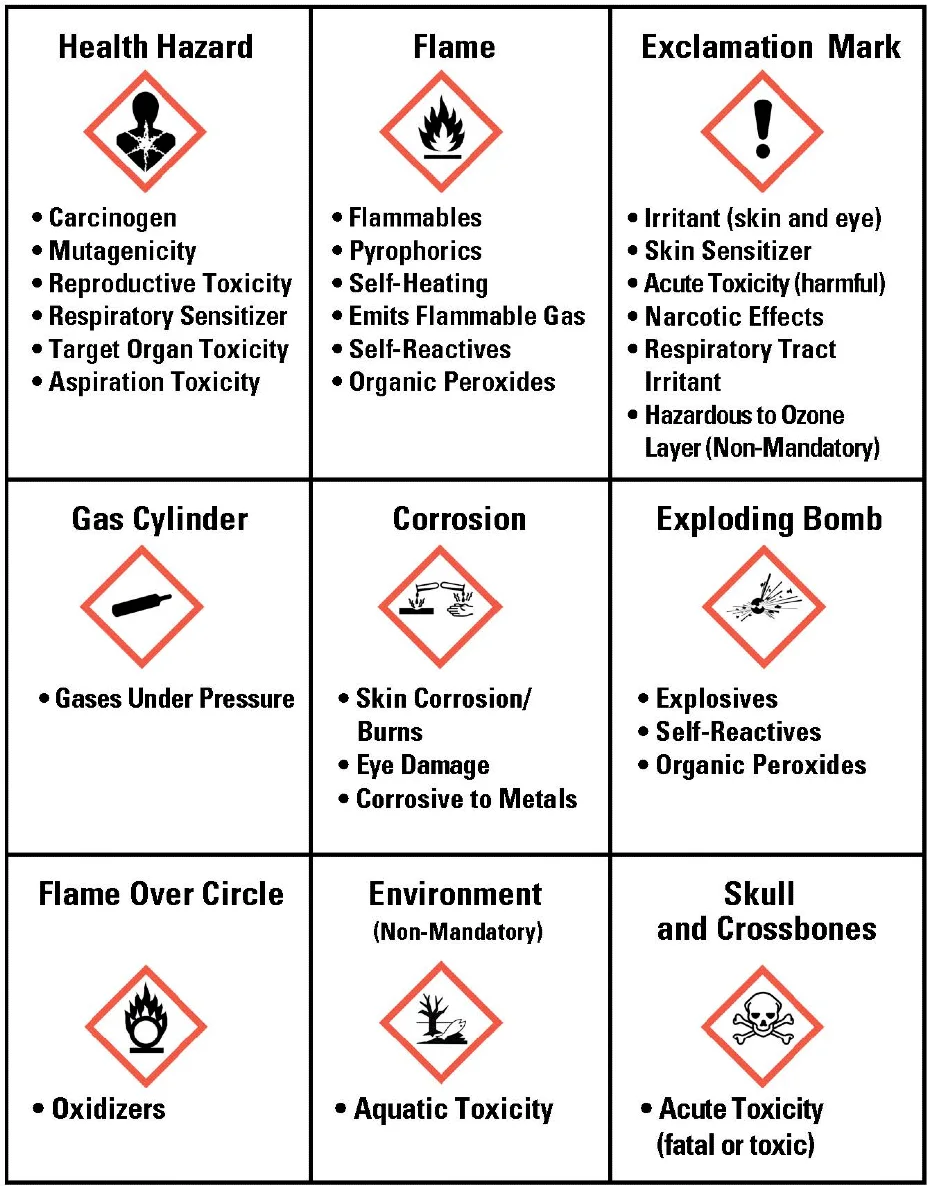
These seemingly unassuming icons pack a punch, conveying critical information at a single glance. They’re like traffic signs for the world of cleaning, guiding us through potential pitfalls and protective measures.
Here’s why becoming fluent in pictograms transforms you from a passive consumer into a vigilant guardian of safety:
Hazard Warnings: Pictograms are like flashing warning signs. They visually alert us to specific hazards associated with a product. Whether it’s corrosive properties, flammability, or health risks, these symbols give us a heads-up before we even open the bottle.
Usage Instructions: Ever felt unsure about a product’s intended use? Pictograms remove the guesswork. They provide clear instructions on how a product should be used, helping you wield its power effectively.
Protective Measures: Just as armor shields a warrior, pictograms shield you. They offer insights into necessary protective measures, such as wearing gloves or eye protection, ensuring that you’re safeguarded during the cleaning battle.
Environmentally Friendly Clues: Some pictograms even hint at a product’s impact on the environment. By deciphering these symbols, you can gauge whether a product aligns with your commitment to eco-conscious cleaning.
Learning to decode these visual cues is like learning a new language—one that empowers you to make informed decisions, safeguard your well-being, and contribute to a safer cleaning experience for yourself and those around you.
Empowering Safety Through Knowledge
As we embrace the enlightening journey through Chemical Safety 101, we discover the immense power of understanding SDS and decoding pictograms.
These tools aren’t just informative; they’re transformative.
They empower us to navigate the world of cleaning products with confidence, ensuring that our cleaning endeavors are marked by safety, effectiveness, and environmental responsibility.
In the upcoming sections, we’ll continue to unravel the secrets of chemical safety, explore the realm of personal protective equipment, and craft an arsenal of eco-conscious cleaning solutions.
Stay with us on this enlightening path to expertise!
Protecting the Protector: Personal Protective Equipment (PPE)
In the realm of house cleaning, we’re not just cleaning; we’re safeguarding.
And even though it’s hard to admit, we must be practical, and that means accepting the fact that a solution of vinegar and lemon juice isn’t always going to get the job done!
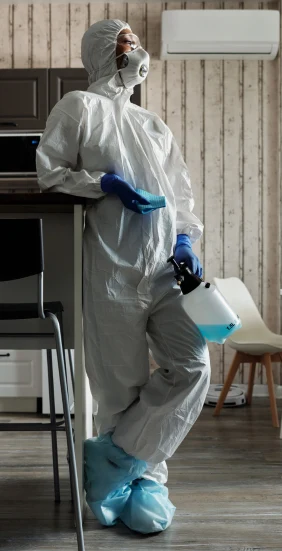
Occasionally we have to turn to harsher, toxic chemicals. That’s life!
And it’s in those times when we take on the noble role of protectors from all things toxic and harmful that we must prioritize our own well-being.
This brings us to a vital tool in our arsenal: Personal Protective Equipment, or PPE.
A Guardian’s Shield: Understanding PPE’s Role
Imagine PPE as your trusted shield, guarding you against potential hazards that may arise during cleaning.
It’s not just a set of accessories; it’s a fundamental aspect of responsible cleaning practices.
Just as a knight wouldn’t go into battle without armor, we shouldn’t embark on our cleaning quests without the right protective gear.
Different cleaning tasks present different challenges, and that’s where tailored PPE comes into play. Just as a carpenter selects different tools for different tasks, we must choose the appropriate PPE based on the cleaning job at hand.
Whether you’re battling chemical splashes, dust clouds, or potential allergens, having the right gear ensures that you’re equipped to face each challenge head-on.
From Gloves to Goggles: A Suite of Safety
PPE isn’t a one-size-fits-all solution; it’s a customizable suite of safety measures.

Gloves shield your hands from harsh chemicals, while goggles protect your eyes from potential splashes.
Face masks ensure you breathe clean air, and aprons guard your clothing from stains and spills.
By assembling a tailored ensemble of PPE, you’re creating a barrier between yourself and potential risks.
While we all appreciate a dash of style, when it comes to PPE, function trumps fashion.
The focus is on ensuring that every piece of protective gear serves its purpose effectively. Aesthetic considerations take a back seat to the paramount goal: your safety and well-being.
As house cleaners, we’re entrusted with the noble task of safeguarding the spaces we touch. Yet, to be effective protectors, we must first protect ourselves.
Personal Protective Equipment is our armor, our shield, and our guarantee of safety. By embracing tailored PPE for each cleaning task, we demonstrate our commitment not only to exceptional cleaning but also to our own well-being.
In the upcoming section, we’ll delve into the realm of crafting an eco-conscious cleaning arsenal, where PPE plays a crucial role in our dedication to a cleaner, greener world. Stay with us as we unveil the next chapter in our journey towards expertise and responsibility.
Crafting an Eco-Conscious Cleaning Arsenal
In our ongoing pursuit of responsible and effective cleaning, we find ourselves at the doorstep of an essential transformation: crafting an eco-conscious cleaning arsenal. This transformation isn’t just about cleaning; it’s about cleaning with a purpose – a purpose that aligns with sustainability, cost-effectiveness, and a commitment to a healthier planet.
Let’s embark on this enlightening journey and explore the realm of eco-friendly cleaning supplies and the remarkable benefits of concentrated products.
Unveiling Eco-Friendly Cleaning Supplies: The Power of Green Solutions
Picture cleaning supplies that not only leave surfaces sparkling, but also contribute to a greener world.
That’s the magic of eco-friendly cleaning supplies. These products are carefully formulated to minimize environmental impact without compromising on cleaning prowess.
As stewards of cleanliness, we hold the power to wield solutions that are not only effective but also kind to our planet.
The Concentrated Advantage: Smart Cleaning, Sustainable Living
Enter the realm of concentrated cleaning products – a game-changer in our quest for sustainable solutions.
Concentrated products offer a dual advantage: they reduce packaging waste and transportation emissions, and they also cost significantly less in the long run.
By diluting these concentrated powerhouses, we unlock an arsenal of cost-effective and eco-friendly cleaning potential.
The Four Essential Eco-Conscious Products Are Your Cleaning Companions
As professional house cleaners, our arsenal comprises four essential eco-conscious products that are as versatile as they are effective:
All-Purpose Cleaner
A true multitasker, this cleaner tackles a range of surfaces, from countertops to floors. With the right dilution ratio, it cuts through dirt, grime, and grease without harming the environment.
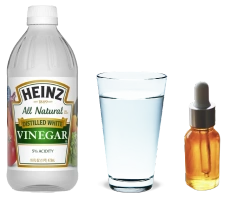
Ingredients
- 1 cup distilled white vinegar
- 1 cup water
- 20–30 drops of essential oil (e.g., lavender, tea tree, lemon)
Directions
- Combine all ingredients in a spray bottle.
- Shake well before each use.
- Spray on surfaces and wipe with a cloth.
Glass Cleaner
Say goodbye to streaks and smudges on windows, mirrors, and glass surfaces. This cleaner leaves a crystal-clear finish, enhancing the aesthetic appeal of any space.
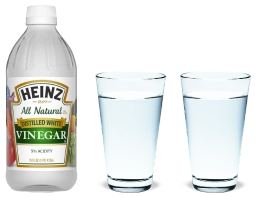
Ingredients
- 2 cups water
- 2 tablespoons distilled white vinegar
Directions
- Mix water and vinegar in a spray bottle.
- Spray onto glass surfaces and wipe with a microfiber cloth or newspaper.
Bathroom Cleaner
Bid farewell to soap scum and mineral deposits with this specialized cleaner. Its eco-friendly formulation ensures a sparkling, sanitized bathroom.
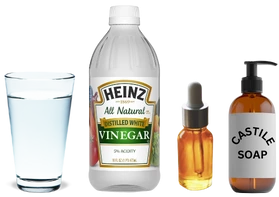
Ingredients
- 1 cup water
- 1 cup distilled white vinegar
- 1 teaspoon Castile soap
- 20–30 drops of essential oil (e.g., eucalyptus, peppermint)
Directions
- Combine water, vinegar, and Castile soap in a spray bottle.
- Add essential oil and shake well.
- Spray on bathroom surfaces, scrub, and rinse.
Floor Cleaner
From hardwood to tile, this cleaner is your flooring’s best friend. Diluted to the appropriate strength, it cleans and refreshes floors without leaving a residue.
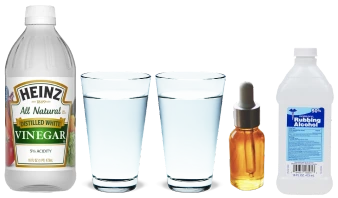
Ingredients
- 2 cups water
- 1/4 cup distilled white vinegar
- 1/4 cup rubbing alcohol
- 5–10 drops of essential oil (e.g., orange, pine)
Directions
- Mix water, vinegar, rubbing alcohol, and essential oil in a bucket.
- Dip a mop or cloth into the solution, wring out excess liquid, and mop the floor.
Matching the Product to the Task: Deep Cleaning vs. Maintenance Cleaning
In our eco-conscious arsenal, each product serves a specific purpose. For deep cleaning – a thorough and occasional endeavor – our concentrated allies shine brightest. However, for routine maintenance cleaning, a milder dilution of these products ensures both cleanliness and sustainability.
Crafting an eco-conscious cleaning arsenal isn’t just a journey; it’s a commitment to a greener, more sustainable way of life. As we explore the wonders of eco-friendly cleaning supplies and harness the power of concentrated products, we pave the way for a cleaner planet, one immaculate surface at a time.
In our final section, we’ll tie together the threads of chemical safety, personal protective equipment, and eco-conscious cleaning, painting a comprehensive picture of expertise and responsibility. Join us as we conclude this enlightening odyssey and set the stage for a future marked by mindful cleaning practices.
Beyond Greenwashing: Embracing Safer Choice
As we traverse the path of conscious cleaning, we must tread carefully around the allure of “non-toxic” claims. While the term once held promise, it has become a terrain of ambiguity and marketing spin. The journey we’ve undertaken isn’t just about replacing one label with another; it’s about making informed, responsible choices.
Enter Safer Choice – a beacon of credibility and assurance in the realm of cleaning products.
Navigating the Shadows of Greenwashing
It’s easy to fall into the trap of greenwashing, where surface-level claims mask the reality of a product’s impact. Relying solely on “non-toxic” labels may lead us astray.
That’s why we turn to the authority of Safer Choice.
This program is more than just a label; it’s a rigorous process that evaluates products for safety and environmental considerations, providing an unbiased assurance of their reliability.
Safer Choice: A Name You Can Trust
Safer Choice-approved products undergo a thorough examination, with every ingredient dissected and assessed for its effects on humans, pets, and the environment.
This process ensures that the products you bring into your home or use in your cleaning business have earned their place through meticulous scrutiny.
Empowerment through the Safer Choice Database
The Safer Choice program has compiled a comprehensive database of over 2,000 approved products. These solutions span various cleaning needs, from windows to upholstery, offering a diverse array of eco-conscious choices.
This database isn’t just a resource; it’s a toolbox for responsible cleaning, enabling us to make choices that resonate with our commitment to a safer, greener world.
Navigating the EPA’s List: Your Safer Choice Action Plan
To harness the power of Safer Choice, follow these steps:
More To Discover
- The 5 Most Toxic Items You Should Remove from Your House and Their Healthy Replacements
- MIT Tech Vaporizes Rocks to Go Deep For Massive Clean Energy Source
- JBS’s Greenwashing Charges As NY Demands Accountability For Company With Italy-Sized Emissions
- Why Mass Tree Planting Might Not Be the Green Savior We Hoped
- Visit the Safer Choice Product Database: Access the Safer Choice database on the EPA’s official website.
- Filter Your Search: Refine your search by product type or cleaning need.
- Explore Approved Products: Browse through the list of Safer Choice-approved products that align with your requirements.
- Make an Informed Choice: Review the product details, ingredients, and usage instructions to ensure they match your cleaning needs.
- Embrace Safer Choice: Select products that bear the Safer Choice seal, knowing that they have met stringent safety and environmental criteria.
As we wrap up our exploration of eco-conscious cleaning, we stand at a crossroads.
The Safer Choice program isn’t just a certification; it’s a movement towards a safer, greener future.
By embracing Safer Choice-approved products, we align our actions with our intentions, making choices that reflect a commitment to our homes, our businesses, and our planet.
Let’s take the next step together, armed with knowledge and determination, as we embark on a journey of responsible cleaning that leaves a positive impact far beyond the surfaces we touch.
In the realm of house cleaning, the journey to a non-toxic and eco-friendly approach begins with understanding the nuances of cleaning products.
By unraveling the distinction between non-toxic and Safer Choice, mastering chemical safety, and embracing personalized PPE, homeowners and professionals alike can confidently select the right products for each cleaning task.
The path to a healthier and greener living space is paved with informed choices, and the Safer Choice program stands as a beacon of assurance in an industry flooded with claims.
As we embrace the principles of Safer Choice, we move one step closer to a cleaner, safer, and more sustainable future.







